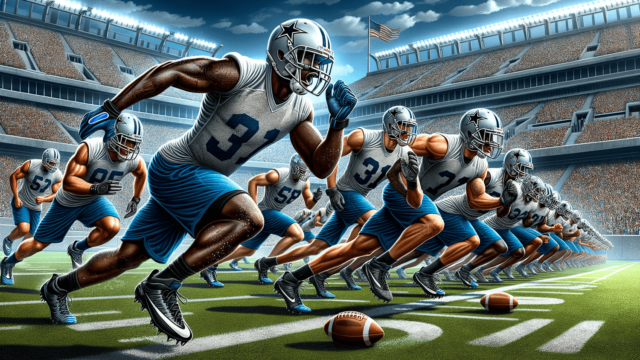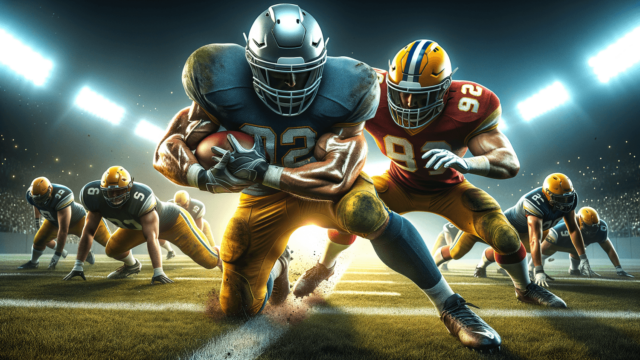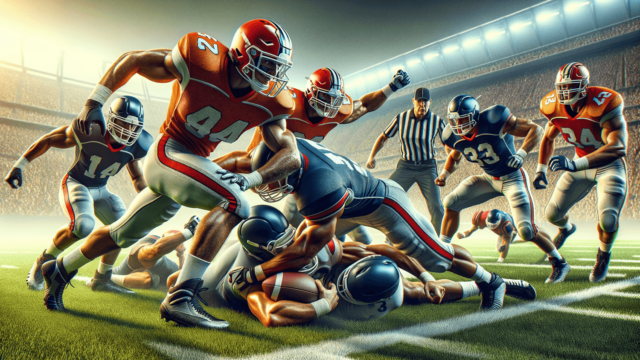
To get faster for football, focus on improving your sprint technique, building lower body strength, and incorporating agility drills. Develop a training routine that includes plyometrics, strength training, and sprints. Consistency and dedication in your training regimen are key to achieving significant speed improvement.
Master Your Sprint Technique
Improving sprint technique is paramount for enhancing speed in football. Concentrate on the following aspects:
- Keep your head straight and eyes focused
- Drive your arms to help generate momentum
- Maintain a high knee lift
- Minimize contact time with the ground by landing on your toes
Strengthen Your Lower Body
Develop powerful legs and hips using targeted strength exercises:
- Squats
- Deadlifts
- Lunges (variations)
- Step-ups
- Glute bridge
Focus on Explosion
Plyometrics are critical to supplement lower body strength with explosiveness. Consider these exercises:
- Box jumps
- Broad jumps
- Skater hops
- Single-leg hops
Incorporate Agility Drills
Dexterity and quickness can greatly boost your football speed. Employ these agility training techniques:
- Shuttle runs
- Ladder drills
- Slalom pole exercises
- Cone drills
Develop a Football Speed Training Routine
Incorporate sprint work, alternating intensities to stimulate progress:
- Short sprints (10-30m) with full recovery between reps
- Long sprints (50-100m) to promote speed endurance
- Hill sprints to build power and acceleration
- Fartlek training to integrate variable speeds and spur aerobic capacity development
Improve Your Flexibility
Increased flexibility allows for a greater range of motion, contributing to overall sprinting speed. Implement stretching and mobility exercises into your regimen to aid in flexibility improvements. Focus on the following:
- Dynamic stretches, such as leg swings and high knee marches, as part of warm-up routines
- Static stretches for hamstrings, quadriceps, hip flexors, and calves during cool-downs
- Regular foam rolling or massages to release muscle tension and improve mobility
Optimize Your Nutrition and Hydration
Proper nutrition and hydration play a crucial role in maximizing athletic performance, including speed. Follow these guidelines:
- Eat a balanced diet rich in lean protein, complex carbohydrates, healthy fats, fruits, and vegetables
- Stay well-hydrated throughout the day and during training by regularly consuming water and electrolyte-rich drinks
- Consume a well-planned pre and post-exercise meal or snack to optimize energy and recovery
Manage Recovery and Rest
Allowing your body sufficient time to recover is essential for continued progress and injury prevention. Ensure proper rest and recovery by:
- Following a well-structured training program to balance high-intensity sessions with active rest days
- Incorporating low-impact cross-training activities, such as swimming or yoga, to avoid overloading the same muscle groups
- Getting adequate sleep to encourage muscle recovery and growth
Track Your Progress
Quantifying your speed improvements will help you maintain motivation and evaluate training effectiveness. To track your progress:
- Time your sprints at different distances using a stopwatch or electronic timer
- Identify areas of weakness, such as poor acceleration or reduced speed maintenance, and adjust your training routines accordingly
- Take periodic videos of your sprinting technique for comparison over time and to pinpoint areas for development
Frequently Asked Questions
After reading the blog post on improving football speed, readers may have some additional questions. This FAQ section aims to address those by providing concise and direct answers to common inquiries related to this topic.
How often should I work on speed training?
It’s recommended to incorporate speed training into your routine 2-3 times per week, allowing enough recovery time to prevent overtraining and injuries. Ensure a balance with strengthening, agility, and flexibility exercises for overall progress.
What type of shoes are best for improving football speed?
Choose lightweight, well-fitting football cleats or running shoes with adequate traction and support for your foot type. The optimal shoe will depend on playing surface, personal biomechanics, and individual preferences.
How long should a football speed training routine last?
A typical football speed training session should last about 45-60 minutes, including warm-ups, main exercises, and cool-downs. Focus on quality over quantity, ensuring proper sprinting form and intensity during each rep.
Can I expect immediate improvements in speed from implementing these techniques?
While you may notice some initial gains, developing significant speed improvements takes time and consistent effort. Stay committed to your training regimen, track progress, and be patient with yourself as you work towards your goals.
Are there any age-specific considerations for speed training in football?
While the fundamental exercises remain the same, adjust training intensity and volume based on age and fitness levels. For younger athletes, focus on technique and gradual progression. For older athletes, prioritize mobility, flexibility, and injury prevention alongside speed exercises.
Featured Posts
- No pillar pages found.





